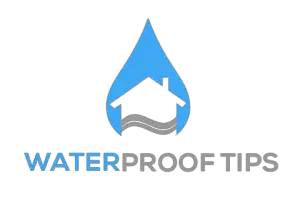In this guide, we explain how to waterproof a deck over a living space.
Getting it right is very important otherwise your living space will suffer from leaks and dampness.
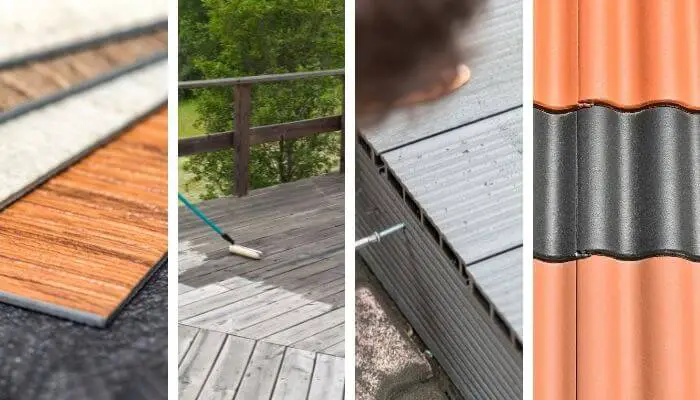
Let’s get to it:
1. Install A Vinyl Deck Membrane
A vinyl deck membrane is a kind of sheet membrane whose primary purpose is to be used as an exterior flooring material.
Vinyl is typically added on top of wood surfaces, including plywood and roof decks.
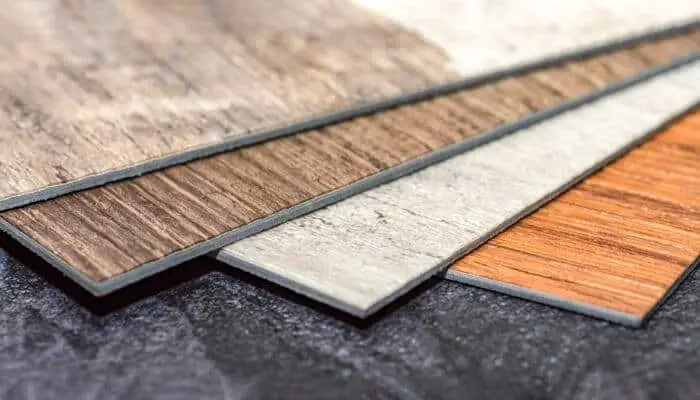
In other words, installing a vinyl deck membrane doesn’t require much effort or maintenance on your behalf and it is very effective at preventing water from getting through and keeping it dry under your deck.
Since the sheets are usually made from PVC and other reinforcement fibers, they last up to 20 years.
Because professionally installing a vinyl membrane can be quite expensive, we’ve put together the following six easy steps to set up your deck vinyl on your own:
- Start by removing debris off the surface of your roof. Do this by both sweeping and mopping the deck.
- Once the coast is dry, go ahead and measure the width of your deck to that of your vinyl sheets. Use chalks if necessary.
- Since vinyl membranes come in a directional pattern, you need to be sure that the sheets are being put down in a horizontal manner.
- Begin by rolling out the vinyl sheets and cutting them to the length of your deck. Leave about 2″ on both ends.
- Position your vinyl membrane so that the sheet meets with the chalk line you drew and that the polyester is on the side up.
- Before you begin coating the sheets in vinyl paint, you may need to consider using thumbtacks or staples to keep the membranes in place while you do so.
2. Use Waterproof Liquid Deck Coating
A sealant coating helps prevent your deck from deteriorating due to water and rain.
Covering your deck with a waterproof liquid deck coating is a simple task that doesn’t take much time.
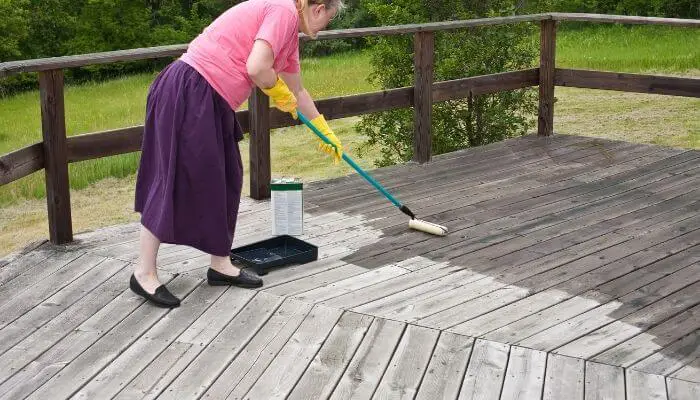
To protect the deck from moisture, make sure that you apply the right kind of coating.
Choosing the appropriate sealant depends on the surface type and primary purpose.
So, with the above in mind, here’s a list of how to apply a coat of a waterproof liquid sealant onto your deck:
- Fold the stapled membranes back half of their width or from the center perimeter of your deck. You’ll be coating the exposed surface of your deck with the sealant.
- Check that the surface is both clean and not too hot. Use your palm to check if the surface is ready. If you can keep your hand there for at least 20 seconds, you’re good to go.
- Remember that the best time to apply a sealant is on overcast days. Direct sunlight is also harmful and would affect the chemical composition of the paint.
- Use a roller to coat both the backside of the vinyl sheet and the exposed deck, respectively. It helps to have another person help you with this so that no one side dries faster than the other.
- Keep in mind that sealant dries on wood fast. On the membrane, however, you need to be sure that the glue is tacky and not wet. It should only stick to your fingers.
3. Reinstall A Waterproof Deck
Fitting waterproof decking over your wooden decking is an effective way to prevent water from getting underneat.
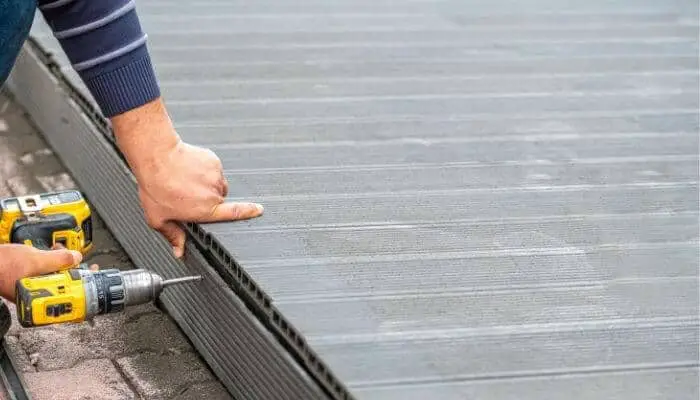
Here’s how to easily go about doing that:
- Start reapplying the vinyl sheet from the center. Don’t use a roller, only your hand to carry out this step.
- Continue on to the corners. After you’re done, go over the entire surface once more with your hands to make sure there are no air bubbles. You have one hour before it becomes harder to smooth the sheet out.
- If you come across a crease, don’t panic, just gently remove the membrane then reapply it slowly.
- Before going onto applying the rest of your vinyl membranes, put down a protective sheet of wax paper to prevent the spilling of any adhesive or coating.
- After repeating the same steps with the other side of the vinyl sheet, you can remove the wax sheet and start flattening the membrane on the deck.
- Before putting down another sheet, we recommend lining the edge of the current vinyl membrane with an inch of masking tape.
4. Use Roofing Approved Decking Materials
Using approved roofing materials for your decking can give you a far more waterproof finish which can actually look very good.
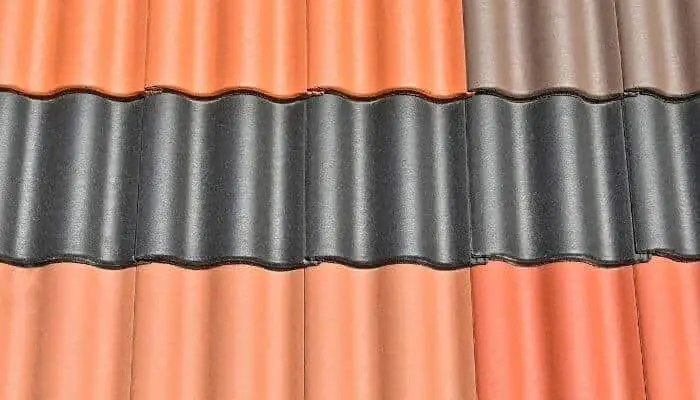
Here are a couple of options that could work:
- Use heavy-duty rubber roof tiles as they’re the most durable and versatile. They’re great for outdoor installations since they’re water-resistant with excellent traction.
- Plastic flow-through tiles, on the other hand, are connected with a loop-and-tab system that prevents the PVC material from separating over time.
